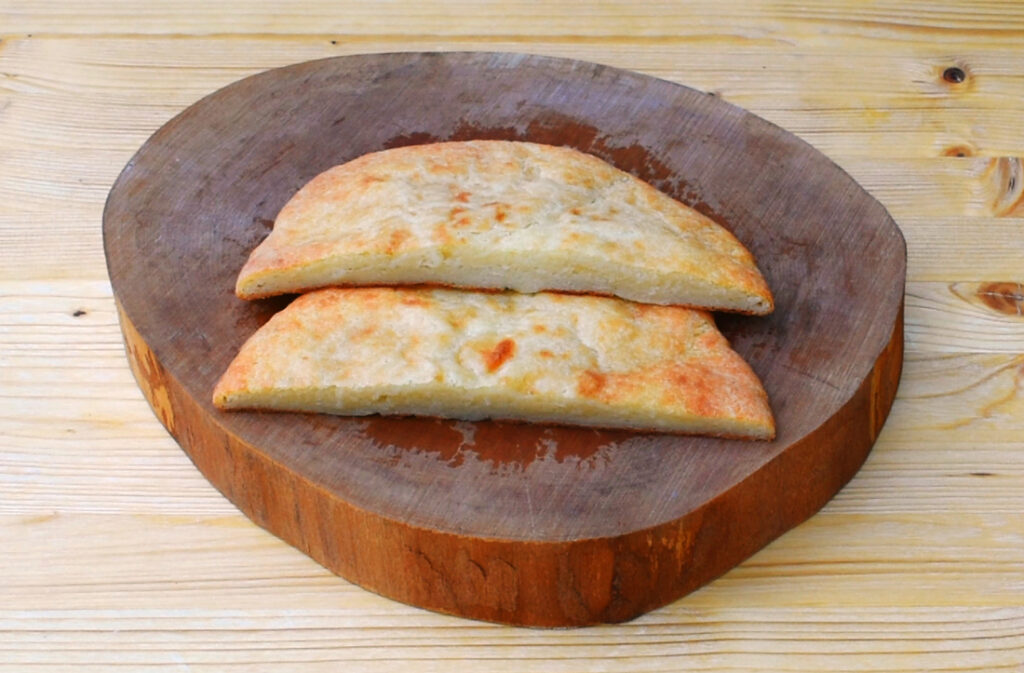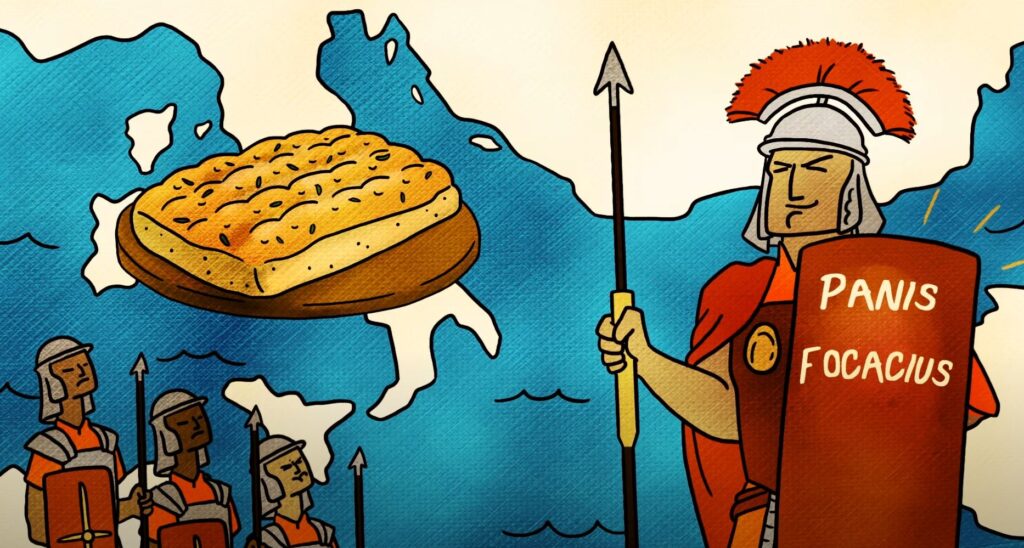
Pizza is one of the most popular food worldwide, with millions of people biting into a hot slice or two every single day. Before there were pizza restaurants on every corner, round, thin flatbreads topped with a variety of vegetables, herbs, oils, meats, and cheeses were the first real street food of European antiquity. It’s hard to imagine the first person to invent pizza not screaming “Eureka!” out of pure joy as he or she gazed upon their masterpiece.
Unfortunately, we do not know exactly when pizza was first invented. There is no specific culinary tradition or cookbook allowing us to pinpoint any exact dates. Nevertheless, we know that the birth of pizza is a symbol of food evolution driven by necessity and poverty. At some point, someone put toppings on a traditional flatbread, and the great-grandfather of pizza was born.
Flatbreads: Meet the Grandparents

The forefather–and first step in the evolution of pizza–is the simple flatbread. Ancient Egyptians, Persians, Greeks, and Romans consumed these flatbreads with a variety of toppings. Thanks to archeologists, we know that different types of bread have been around for over 7,000 years. Moreover, scholars have also proven that putting toppings on bread or flatbreads has always been a very common custom. For example, in 500 B.C., Persian soldiers serving under Darius ate flatbreads with cheese and dates. At the same time in Greece, flatbreads with herbs and oil were also very common.
The most astonishing example of an early pizza-like dish comes from Virgil’s Aeneid, written in 19 B.C. According to Virgil, Trojan citizens escaping the sacking of their city by the Achaeans landed in Latium, Italy, in a state of near starvation. Upon arrival, locals fed them a meal of cooked mushrooms and vegetables served on round cakes. After everyone had eaten their fill, Ascanius, the son of Aeneid, apparently exclaimed, “Look! We have eaten our plates!” This passage in Virgil’s Aeneid confirms other sources that mention that the ancient inhabitants of the Italian peninsula ate their plates!
Roman Flatbreads: Focaccia

Scholars believe that the Etruscans invented the first focaccia, a flatbread topped with herbs and oils. The Romans called this bread panis focacius, which literally means “bread baked in a brick oven.” Panis focacius was a very common food in Rome, and Romans would often customize their meal by adding their favorite toppings. After the fall of the Roman Empire, focaccia remained a popular and common food. In fact, this quick-cooking street food would continue to be baked up for centuries and later improved by the Neapolitans. Many scholars believe that flatbread focaccia is actually the real father of pizza and an important step in pizza’s evolution.
Flatbread Evolves Into Pizza
Historians have found the first mention of the word “pizza” in a document dated 997 A.D. in Gaeta, a city just north of Naples. In this document, a son of a lord promised pizza to a local bishop as a yearly tribute. In addition, the word is mentioned a few times in other areas around Naples and in southern Italy. Why “pizza” replaced “flatbread” is unknown, but there are different theories on the origin of this very popular word. One thing is sure: some types of flatbreads had evolved into something different, and the new name people were using to describe the new dish was “pizza.”

Where Does the Word “Pizza” Come From?
The word “pizza” has three probable origins. The first possibility is that the word derives from the Greek pitta. The second is that it derives from the Lombardic term bizzo, or pizzo, which means “a mouthful”. This is very probable as the Lombards, who conquered northern Italy, had settlements not far from Naples. Lastly, the word could derive from the dialectal form pinza of the Latin word pinsere, which means “to pound or stamp.” The action of pounding and stamping the dough could easily describe the necessary steps in preparing dough for pizza.
The Neapolitan Connection to the First Pizza

Naples is a city located south of Rome that was originally settled by the Greeks in 600 B.C. As early as the 16th century, a lower-class version of flatbread, called gallette, was very popular. In the early 1700s, Naples (Napoli) was an important and growing port city that was virtually independent from surrounding municipalities. This made Naples an attractive place for business, and, as a consequence, Naples more than doubled its size in a short amount of time, with the streets becoming more and more densely populated the closer you got to the harbor.
This new, vibrant city needed food, and Neapolitans needed cheap street food to eat on the go. As a consequence, flatbreads served with different toppings became a common food sold on the streets or in informal restaurants. Visitors to Naples of noble standing often described the new tradition of buying and eating food in the streets as improper and disgusting. However, the opinions of the upper classes did nothing to curb Neapolitan enthusiasm for gallette, which, at this point, already included many of the favorite toppings we like on pizza in modern times, including tomatoes, cheese, garlic, oil, and anchovies.

The Marriage of Tomatoes and Pizza
It is commonly known that tomatoes came from the new land called The Americas, so you might wonder what Italians were putting on their flatbreads and pastas before they got their hands on tomatoes. Pasta and pizza were already available before tomatoes made it to the Italian peninsula in the 16th century via Spain, but once tomatoes hit the markets in the Old World, adoption of tomatoes into Italian cuisine was almost instantaneous. In fact, as early as the 17th century, Italians started finding ways to boil and conserve tomatoes in jars, giving birth to the tomato sauces we now know and love.
Tomato sauce began being used on flatbread and pizzas in Naples almost as soon as they became available. Tomato sauce on flatbreads did not, however, became popular throughout the rest of the Italian peninsula until the invention of the Pizza Margherita.
The Most Basic of Pizzas: Margherita

After Italy was unified, King Umberto I visited Napoli with his wife, Queen Margherita. Apparently, the royal couple, tired of the monotonous high class cuisine they had been served, asked to taste a local dish they had heard about: pizza. Raffaele Esposito, a famous local pizza maker, delivered an assortment of different pizzas to the royal couple and also created a new pizza just for the occasion. Raffaele’s new pizza paid homage to the royal couple and the colors of Italy with green basil, white mozzarella, and red tomatoes. Legend goes that Queen Margherita enjoyed this simple tomato, cheese, and basil pizza the best out of all the pizzas Esposito delivered. Consequently, Esposito’s renowned pizzeria proudly named this new pizza the “Margherita” in her honor.

To know more we suggest the book Pizza: A Global History.